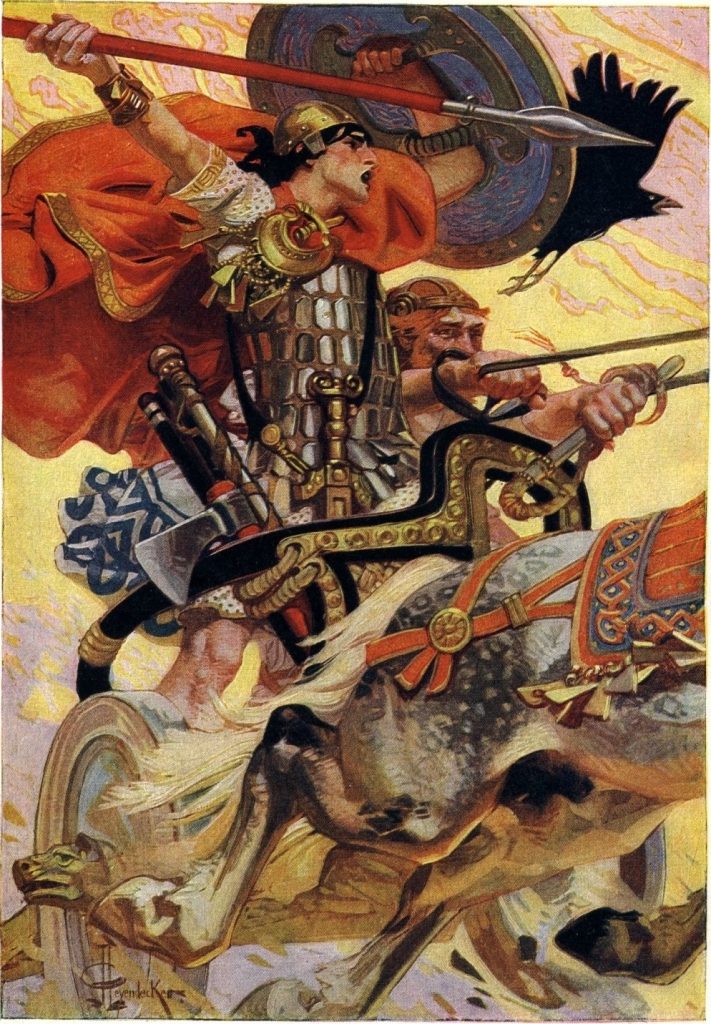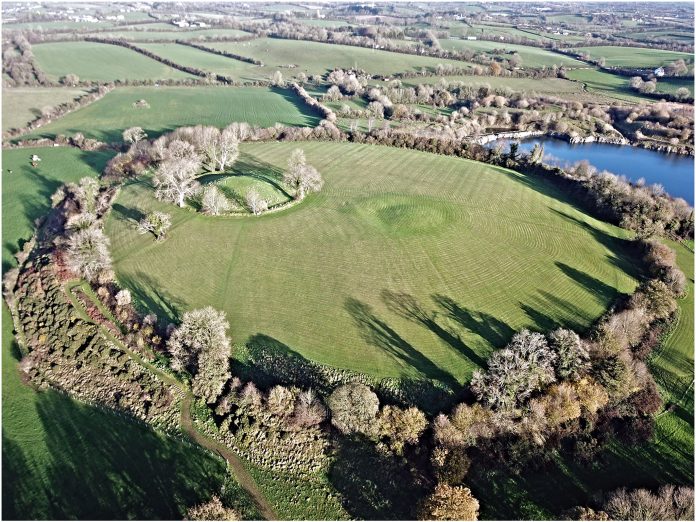Discoveries from a new campaign of large‐scale multi‐method geophysical surveying, focused on Navan Fort and its environs are reported in the Oxford Journal of Archaeology. Researchers from Queen’s University Belfast and the University of Aberdeen uncovered evidence for a series of monumental temple complexes of the Iron Age, as well as residences of early kings of Ulster from the medieval period, at Navan Fort.
The large earthwork now known as Navan Fort sits alongside other iconic monuments such as Tara, Rathcroghan, Knockaulin and Cashel as one of Ireland’s so‐called provincial centres. Historical texts imply that these Iron Age complexes became enduring symbols of power for early medieval societies, and royal centres for overkings.
The results are the initial work of an on-going programme that add rich discoveries to the iconic site of Navan Fort. The sighting evidences a vast temple complex and ceremonial centre of prehistoric Europe, as well as the first evidence of continued medieval activity during the period when Navan Fort was associated with the kingship of Ulster. It is one of Ireland’s so-called royal sites, a group of five ceremonial centres of prehistoric origin, documented in the medieval period as the capitals of the five fifths that divided Ireland.
The work is part of the Comparative Kingship project, funded by the Leverhulme Trust, and is being supported by Historic Environment Division of the Department of Communities Northern Ireland who own the site as a monument in State Care.
This project adopts an innovative interdisciplinary focus that tackles the formation of the socio-political landscapes of Northern Britain and Ireland, utilizing archaeological, historical, toponymic and palaeoenvironmental methodologies along with Bayesian-modelled chronologies, to create a new synthesis of the dramatic changes that ultimately led to the formation of the state societies that existed beyond the edges of the Roman Empire.
Talking about the survey, Dr Gleeson said: “Excavation in the 1960s uncovered one of the most spectacular series of buildings of any region of prehistoric Europe, including a series of figure-of-8 buildings of the Early Iron Age and a 40m timber-ringed structure constructed c.95 BC. Upon the latter’s construction, it was immediately filled with stones and burnt to the ground in order to create a massive mound that now dominates the site.
“Our discoveries add significant additional data, hinting that the buildings uncovered in the 1960s were not domestic structures lived in by kings, but a series of massive temples, some of the largest and most complex ritual arena of any region of later prehistoric and pre-Roman Northern Europe.”
In addition to identifying the residences of early medieval kings of Ulster, activity at Navan Fort is contemporary with the foundation of Armagh by St Patrick only 1km to the east and some of the buildings uncovered are likely to be the identifiable with the house built by Níall ÓG Ua Neill for all the poets of Ireland in 1387. Evidence for the continuity of activity at Navan after the coming of Christianity and foundation of Armagh, the primatial see of the Church in Ireland, is particularly significant.
Navan Fort is one of Ireland’s most ancient landscapes because it is the seat of legendary kings, like Chonchobhar and mac Nessa, and provides the backdrop to the exploits of warriors like Cú Chulainn, Conal Cernach and others in the great epic saga Táin Bó Cuailainge, or the Cattle Raid of Colley.

Read more: O’Driscoll, J., Gleeson, P., and Noble, G. (2020) RE‐IMAGINING NAVAN FORT: NEW LIGHT ON THE EVOLUTION OF A MAJOR CEREMONIAL CENTRE IN NORTHERN EUROPE. Oxford Journal of Archaeology, https://doi.org/10.1111/ojoa.12198.

